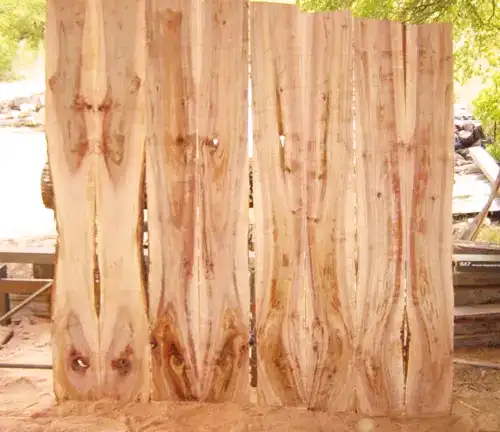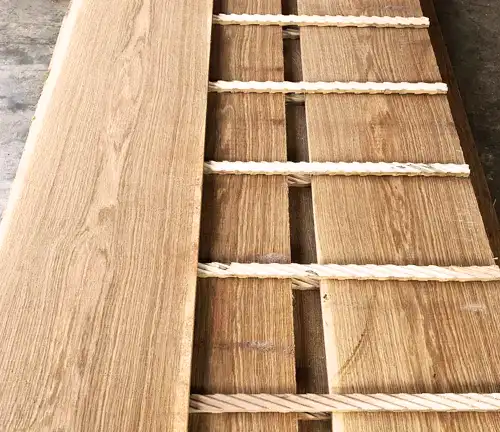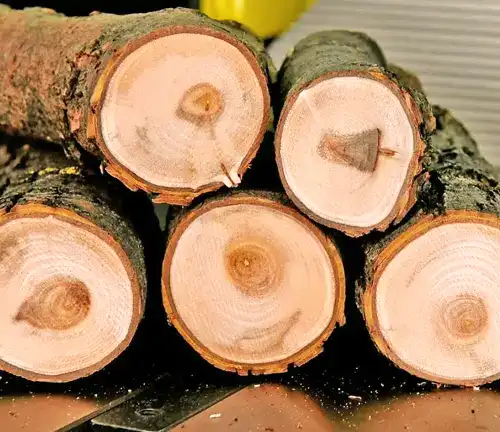Willow Oak Lumber
- June 27, 2023
- 0 comment

Willow Oak lumber, extracted from the Quercus phellos species, stands out in the realm of hardwoods due to its unique characteristics and versatile applications. The wood’s distinct grain patterns, often displaying a captivating interplay of reddish-brown tones, lend it an aesthetic charm that appeals to artisans and designers alike. Renowned for its strength and durability, Willow Oak lumber is favored not only for its visual appeal but also for its reliability in various woodworking projects.
One of the key features that sets Willow Oak apart is its moderate density and fine texture. This combination makes it an excellent choice for crafting furniture, allowing artisans to create pieces with intricate details and smooth surfaces. Woodworkers appreciate its workability, as it responds well to cutting, carving, and finishing processes, facilitating the realization of intricate designs and artistic flourishes.
Beyond its indoor applications, Willow Oak lumber is a preferred material for outdoor projects. Its inherent resistance to decay makes it well-suited for use in decks, fencing, and other exterior structures, where durability is paramount. The wood’s ability to withstand the elements enhances its appeal, ensuring that structures crafted from Willow Oak lumber maintain their integrity over time.
| Specification | Details |
|---|---|
| Density | 45 lbs/ft³ (720 kg/m³) |
| Shear strength | 850 psi (5.9 MPa) |
| Distribution | Eastern North America |
| Modulus of rupture | 15,800 psi (108.9 MPa) |
| Modulus of elasticity | 2,230,000 psi (15.37 GPa) |
| Compressive strength | 9,520 psi (65.6 MPa) |
| Janka Hardness | 1,450 lbf (6,460 N) |
| Moisture content | 6-12% |
| Grain | Straight to wavy |
| Crushing Strength | 7,900 psi (54.5 MPa) |
| Shrinkage | Radial: 4.8%, Tangential: 7.3%, Volumetric: 11.3% |
Color/Appearance:

Willow Oak lumber, sourced from the resilient Quercus phellos tree, boasts a captivating color palette that adds a touch of warmth and sophistication to woodworking projects. Ranging from light to medium reddish-brown tones, this hardwood’s hues are complemented by distinctive grain patterns, creating a visual tapestry that appeals to both artisans and aficionados of fine woodwork.
Unique Feature
What sets Willow Oak apart is its exceptional strength and durability. This hardwood stands as a testament to nature’s craftsmanship, offering a combination of robustness and aesthetic charm. Its unique feature lies not just in its visual appeal but in the way it effortlessly balances both form and function.

Grain/Texture

The grain of Willow Oak lumber is a visual feast for woodworking enthusiasts. With a pronounced grain that includes attractive rays and flecks, this hardwood exhibits a fine texture that enhances its overall appearance. The interplay of grain patterns provides depth and character, making Willow Oak a preferred choice for those who appreciate the intricacies of wood grain.
Rot Resistance
One of Willow Oak’s standout qualities is its natural resistance to decay. This makes it an ideal candidate for outdoor applications, such as decks and fencing, where exposure to the elements can challenge the integrity of lesser woods. Willow Oak lumber, with its inherent rot resistance, ensures longevity and durability in various environmental conditions.

Workability

Craftsmen and woodworkers prize Willow Oak for its exceptional workability. The wood responds favorably to cutting, carving, and finishing processes, making it a joy to work with in various projects. Its moderate density and fine texture allow artisans to achieve smooth finishes and intricate designs, adding a layer of artistry to the practicality of the wood.
Allergies/Toxicity
In terms of health considerations, Willow Oak is generally considered safe to work with. However, as with any wood, it’s advisable to take standard precautions such as wearing a mask and using adequate ventilation to minimize exposure to wood dust during the crafting process.
Pricing/Availability
The pricing and availability of Willow Oak lumber can vary depending on factors such as regional availability, demand, and the quality of the wood. Generally, it occupies a reasonable pricing bracket, making it accessible for a range of woodworking projects. Availability may depend on the geographical location and the specific requirements of the woodworker.
Sustainability
While Willow Oak is not specifically known for rapid growth, responsible harvesting practices contribute to its sustainability. Forest management and conservation efforts play a crucial role in ensuring a continuous supply of this hardwood without compromising the delicate balance of ecosystems. Choosing Willow Oak lumber from sustainable sources underscores the commitment to ethical and environmentally conscious woodworking practices.

Common Uses
Willow Oak lumber, renowned for its durability and appealing aesthetic, is a versatile material with numerous common applications in the realm of woodworking. Craftsmen frequently turn to Willow Oak for furniture crafting, leveraging its fine texture and distinctive grain patterns to create visually striking pieces such as tables, chairs, and cabinets. Its robust nature makes it a preferred choice for flooring, ensuring longevity and adding a touch of timeless elegance to interior spaces. The wood’s natural resistance to decay makes it particularly suitable for outdoor structures, including decks and fencing, where exposure to the elements demands durability. Willow Oak’s workability shines in architectural millwork, where it is often used for moldings, trim, and decorative elements, contributing to the detailing of interior designs. Additionally, Willow Oak lends itself to smaller woodworking crafts, allowing artisans to create intricate carvings, turned items, and other artistic expressions. Its application extends to paneling, providing a warm and visually appealing finish to walls. Whether incorporated into architectural features like beams and mantels or used in the crafting of musical instruments, Willow Oak continues to be a wood of choice for those seeking a harmonious blend of strength and aesthetic appeal in their projects.


Frequently Asked Questions (FAQs)
- Is Willow Oak lumber suitable for use in boatbuilding?
Willow Oak is not a traditional choice for boatbuilding due to its moderate density and lack of natural resistance to water. While it can be used in some interior boat components, other hardwoods like mahogany or teak are more commonly favored for marine applications. - Can Willow Oak lumber be stained to achieve a different color?
Yes, Willow Oak lumber can be stained to alter its color. However, it’s important to note that its natural reddish-brown hue is part of its appeal. Staining may change the color, but it could also obscure the unique grain patterns and rays that make Willow Oak visually distinctive. - Does Willow Oak lumber have any specific odor or scent when worked with?
Willow Oak is generally considered odorless when being worked with. Unlike some woods that have a distinct scent or aroma, Willow Oak is appreciated for its neutral scent, which can be preferable for those who are sensitive to strong wood odors. - Can Willow Oak lumber be used for turning on a lathe?
Yes, Willow Oak lumber is a suitable choice for woodturning projects on a lathe. Its fine texture and workability make it a favorite among woodturners, allowing them to create a variety of turned items such as bowls, vases, and spindles. - Is it possible to find reclaimed Willow Oak lumber for eco-friendly projects?
Finding reclaimed Willow Oak lumber may be more challenging compared to other reclaimed woods like oak or pine. However, with conservation efforts in place, reclaimed Willow Oak can occasionally be sourced, offering an eco-friendly option for those interested in sustainable woodworking projects.







Leave your comment